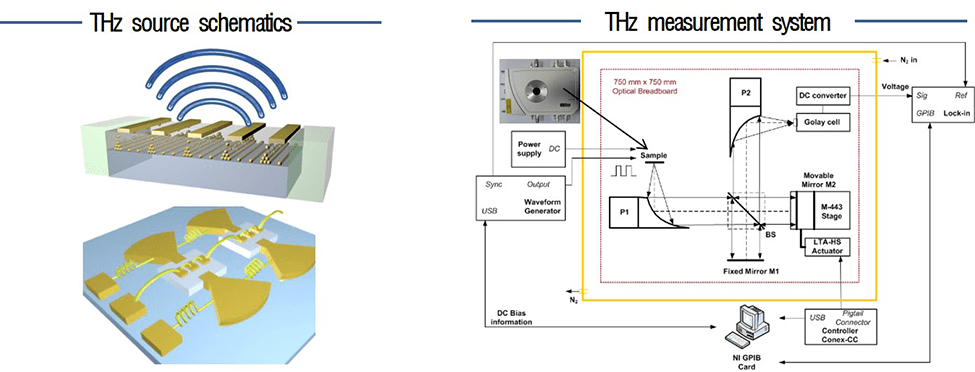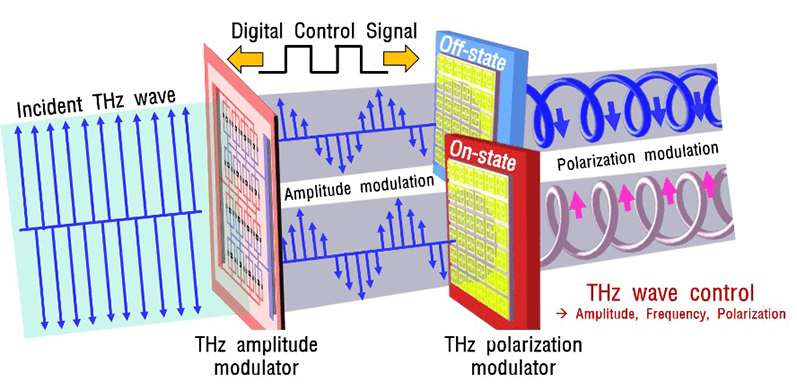Terahertz(THz) wave technology is expected to create new functions that can not be replaced by electromagnetic wave technology of different frequency bands
in high-speed wireless communication, medical imaging, biosensor, etc. However, due to the immaturity of component technology, Industrial applications are delayed.
Demand for various components such as THz signal sources, modulators, and detectors is increasing. Particularly, as the demand for characteristics such as portability,
room temperature operation and low power consumption is increasing, development of semiconductor-based terahertz component technology is socially required.
In MIDAS group, various terahertz components are being developed based on a two-dimensional electron fluid platform such as III-V HEMT and Graphene.
In the development of terahertz signal sources and detectors, plasma instabilities occurring in two-dimensional electron fluids are exploited
to overcome the limitations of the prior art. In the case of a terahertz control device, the polarization, amplitude, and frequency response characteristics of
a terahertz wave are electrically controlled through integration with an artificial material structure, so called, metamaterials.

The THz signal source, which is currently in commercial use, usually uses a separate femtosecond laser to generate a THz wave in the form of a time-domain pulse
by irradiating the optical beam into the semiconductor, so that a separate laser device is required, which reduces portability and is expensive. Low efficiency
and high efficiency can be achieved with QCL, which does not require laser excitation, but it has a drawback that it has a very high technology barrier
and operates only at extremely low temperatures.
In MIDAS group, we develop all electronic small THz signal sources that do not require separate laser equipment. In particular,
we have developed a small THz signal source that can emit high output and narrow THz signals at room temperature.
We also develop THz measurement system which can analyze frequency characteristics of THz signal source according to temperature in wide frequency range
and imaging system that can acquire THz image by using developed signal source.

Terahertz waves have limitations in applying control methods commonly used in “Electronics” and “Photonics”.
The method used in “Electronics” has a large energy loss in the frequency conversion process and the method used in “Photonics” has very difficult optical control because
the terahertz wave has very small energy (~ meV). Therefore, a metamaterial-based terahertz wave control technology capable of directly modulating a terahertz wave
with little energy loss is attracting attention. In addition, electrical control via integration with nanoelectronic device platforms can also be extended
to programmable modulators by combining with advanced digital technology.
In MIDAS group, we are developing a modulator capable of controlling the characteristics of terahertz waves through the integration
of two-dimensional electron fluid platforms such as III-V HEMT and Graphene and THz metamaterials. We have developed a modulator that can control
the characteristics of terahertz imaging system.
